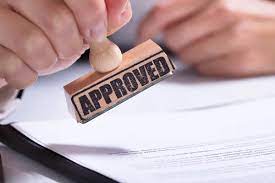Comprehensive Acquisition


Implementing measures to prevent unauthorized transactions, such as using multi-factor authentication, monitoring and analyzing transaction patterns, and identifying and blocking suspicious activity. By taking these steps, the likelihood of fraudulent spending can be minimized, resulting in increased security and reduced financial losses.
Implementing measures to streamline the purchasing process, such as using automation, simplifying procedures, and reducing unnecessary steps. By doing so, the approval process becomes more efficient, resulting in faster decision-making, improved accuracy, and reduced costs. This can lead to greater overall productivity and better outcomes for the organization.


Policy compliance verification is the process of ensuring that an organization's policies, procedures, and guidelines are being followed by employees and stakeholders. It involves assessing and monitoring activities to ensure they align with the established rules, standards, and legal requirements. Verification helps to mitigate risks, improve accountability, and maintain regulatory compliance.
Users, typically from the procurement or purchasing department, authenticate securely to access the app.
Users can create purchase requisitions within the app, specifying details such as quantity, specifications, and delivery requirements.
Users can record the receipt of goods or services within the app, indicating whether they meet specified quality and quantity standards.
Integration with budget management systems helps users stay within budget constraints by providing real-time tracking of expenditures against allocated budgets.
Once a requisition is approved, the app facilitates the creation of purchase orders, including necessary details such as item descriptions, quantities, prices, and delivery dates.
Integration with financial systems enables users to match received invoices with corresponding purchase orders and goods/services receipts, streamlining the payment process.
The app may include a supplier management module, allowing users to view and select approved suppliers, track supplier performance, and manage contracts.
Learn more about supplier management →The app may include communication features to facilitate collaboration among team members, suppliers, and other stakeholders involved in the procurement process.
Purchase requisitions often go through an approval workflow, where designated personnel review and approve or reject requests. App notifications keep users informed about the status of their requisitions.
The app may offer analytics and reporting tools to provide insights into procurement trends, spending patterns, and supplier performance.
Ensure compliance with internal procurement policies, industry regulations, and legal requirements by configuring the app to enforce and track adherence.
Integration with Enterprise Resource Planning (ERP) systems ensures seamless data flow between the purchase app and other organizational systems.